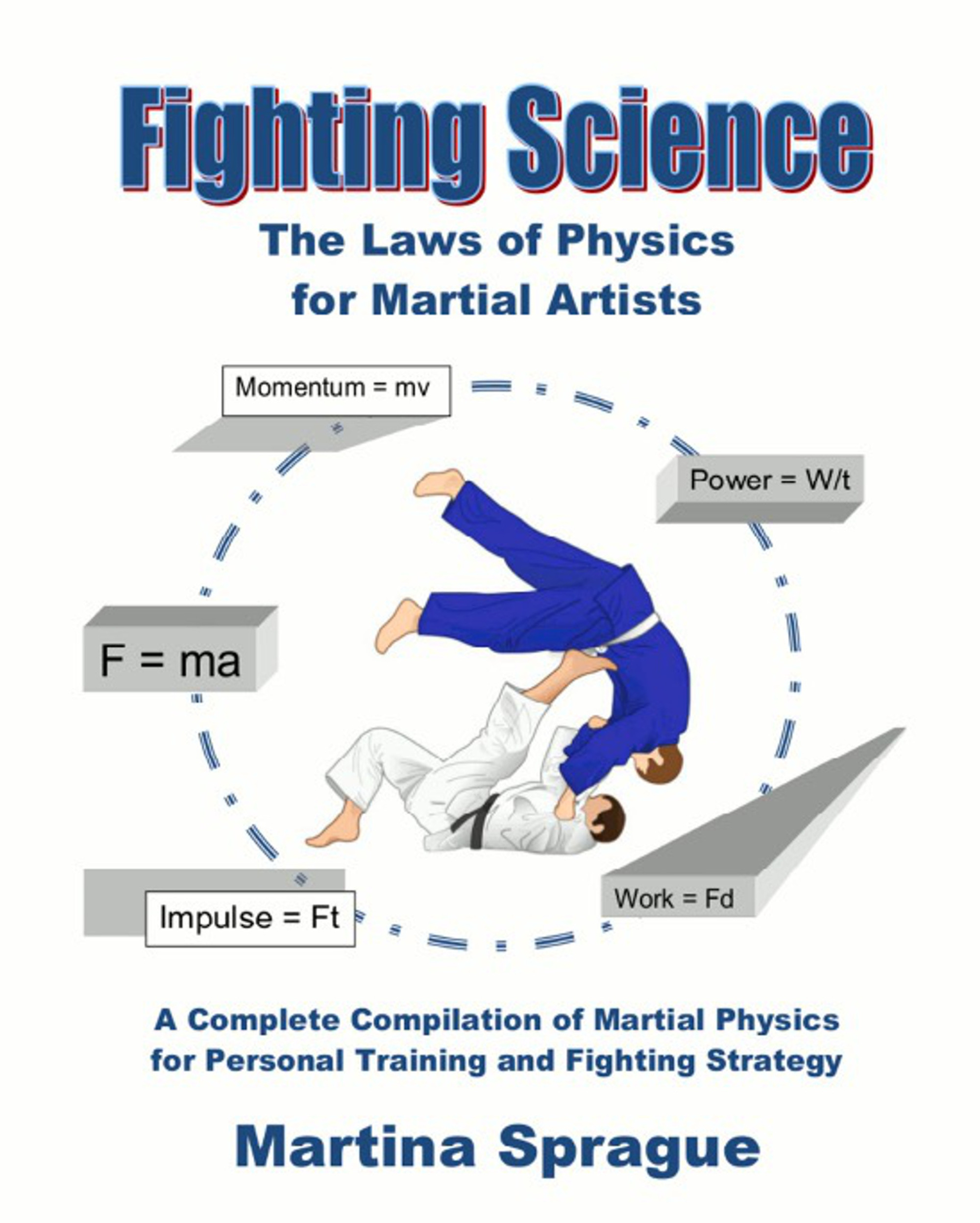 fax (000) 000-0000
fax (000) 000-0000
toll-free (000) 000-0000
Fighting Science: The Laws of Physics for Martial Artists
You hate physics? You're just not a math whiz?
Many of us squirm when we hear the word
physics, and the first
that comes to mind are numbers and letters mixed into a sort of
incomprehensible language called equations. But don't worry.
The physics we will discuss here is conceptual physics, which relies
primarily on concepts rather than equations. Concepts are ideas with
which we are already familiar. These ideas are then related to the
martial arts (power, in particular). Below is a list of the few
equations you need to know and their commons symbols. These are
explained in detail throughout the text:
1. Momentum = mass X velocity (p = mv)
2. Force = mass X acceleration (F = ma)
3. Torque = force X lever arm (T = Fr)
4. Impulse = force X time (j = Ft)
5. Work = force X distance (W = Fd)
6. Power = work / time (P = W/t)
7. Kinetic energy = 1/2
mass X velocity squared (K = 1/2mv2)
Although many books about power in the martial
arts rely on physical conditioning and prompt us to do pushups and
situps and plyometric exercises, this book takes us through the back
door and shows us the
principles of physics behind power. The purpose is not to
negate the importance of physical conditioning, but to complement it
by broadening our understanding of sound mechanics of technique
through the use of the natural laws of motion. It thus takes us to
the highest stage of learning (correlation) through the laws of
physics. The first chapter compares standup fighting (karate,
kickboxing) and ground fighting (grappling), and explores how the
concepts of physics and strategy apply to both. Subsequent chapters
discuss and define the terms and concepts in detail, breaking them
down into their component parts. We will then train using the laws
of physics to our advantage.
Before gaining proficiency, however, we must
learn proper mechanics of technique. This is called mechanical
or rote learning, and is memorization without understanding. The
mechanical stage does little good in free sparring, yet is necessary
as a foundation for continued growth. The second stage of learning
is called understanding. When reaching this level, we know
when to do a technique and why the moves follow a particular
sequence. We can now answer questions about the technique, without
necessarily being proficient in its execution. The third stage of
learning is called application. We can now use what we have
learned in unrehearsed sparring. The fourth stage of learning is
called correlation. This is where the concepts of one
technique are applied to another, or where the concepts of standup
fighting are applied to grappling, and vice versa. Providing that we
have learned sound mechanics of technique, our knowledge and skill
from one style of martial art will now carry over to another,
allowing us to diversify our skill without spending years perfecting
a particular martial art. We can now become our own instructor.
Once we understand the principles that apply to
balance, body mass in motion, inertia, direction, rotational speed,
friction, torque, impulse, and kinetic energy, the need to memorize
hundreds of techniques vanishes. A true principle applies to all
techniques and all people, whether we are standing, sitting,
kneeling, prone, or supine; whether we are big or small, strong or
weak. Physics is neither good nor bad; it can neither be given to us
nor taken away. It applies equally to all people at all times. It's
how we use it that makes the difference.
As you proceed, keep in mind that certain words that have an exact meaning in physics have occasionally been used in everyday language. An example is the word power. In physics, power is defined as work/time. But to the martial artist, the term power can have diverse meanings and is commonly used to determine how much damage we can do when landing a strike or kick. The way the martial artist uses the word might prove disturbing to the student of physics. But since the book is written for the student of martial arts, power should primarily be thought of as the force of impact of a punch or kick. A student of physics might also frown on the fact that we have chosen to display numbers without specifying units. This is done to simplify the text and retain focus on concepts rather than equations. To ask a student of martial arts to strike with a force of a certain number of newtons, would have meaning only if he or she had some prior knowledge of physics.
